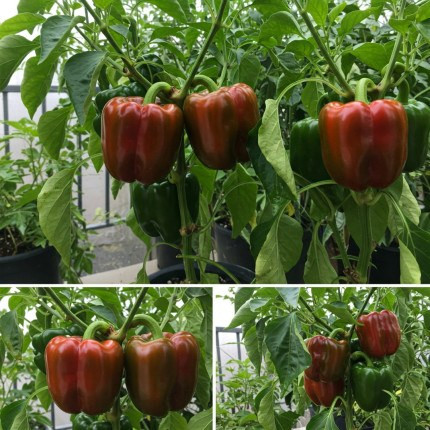ADVERTISEMENT
—
ADVERTISEMENT
## 🧂 Step 3: Prepare the Soil
Healthy soil = healthy peppers.
* Use **loamy, well-drained soil** with a pH between 6.0–7.0
* Mix in **compost or aged manure** to improve fertility
* Add organic matter to retain moisture while ensuring proper drainage
> ✨ Bonus tip: Add a tablespoon of **Epsom salt** (magnesium sulfate) per plant at the base once a month — it helps boost fruit production.
—
## 🌱 Step 4: Planting the Seeds or Seedlings
You can start peppers from seeds indoors or transplant seedlings directly outside.
### If Starting from Seed:
* Start indoors **8–10 weeks before the last frost**
* Keep soil moist and warm (around 75°F/24°C)
* Transplant outdoors after all danger of frost is gone
ADVERTISEMENT
### Transplanting Tips:
* Space plants **18–24 inches apart**
* Bury them slightly deeper than they were in the pot
* Water immediately after transplanting
—
## 💧 Step 5: Watering and Mulching
Consistent watering is key to healthy peppers — **but don’t overdo it**.
ADVERTISEMENT
* Water when the top inch of soil feels dry
* Deep watering 2–3 times a week is better than shallow, daily watering
* Avoid getting water on the leaves to prevent disease
**Mulch** with straw, leaves, or compost to:
* Retain soil moisture
* Suppress weeds
* Regulate soil temperature
—
## 🌿 Step 6: Feeding Your Pepper Plants
Feed your plants regularly to encourage strong growth and fruiting.
* Use a **balanced fertilizer** (e.g., 10-10-10) during early growth
* Switch to **low-nitrogen, high-potassium** fertilizer once flowers appear
* Feed every 2–3 weeks or as needed
—
## 🐛 Step 7: Pest and Disease Management
Watch for common pepper pests like:
* **Aphids**
* **Spider mites**
* **Whiteflies**
* **Pepper weevils**
Use natural pest control methods:
* Neem oil spray
* Insecticidal soap
* Companion planting with basil or marigolds
Keep an eye out for fungal diseases like **blight or powdery mildew** — good air circulation and avoiding wet leaves help prevent them.
—
## 🍅 Step 8: Harvesting for Maximum Flavor
Peppers are usually ready to harvest **60–90 days after planting**, depending on the variety.
* Pick **green bell peppers** when they reach full size and are firm
* For red, yellow, or orange peppers, wait until they fully ripen
* Use clean, sharp scissors or garden shears to avoid damaging the plant
> 🌶️ Hot tip: The longer you leave peppers on the plant, the hotter and sweeter they get!
—
## 🌾 Final Thoughts: Enjoy Your Bountiful Pepper Harvest
Growing peppers is a fun and flavorful way to add color to your garden and spice to your meals. With just a little attention to soil, sunlight, and watering, you’ll enjoy a long, productive growing season.
Whether you’re sautéing sweet bells or spicing up your salsa with homegrown chilies, there’s nothing like harvesting peppers from your own garden.
—
Would you like this guide as a printable checklist, gardening calendar, or beginner-friendly infographic? Let me know — I’d be happy to help! 🌶️🌿
ADVERTISEMENT
